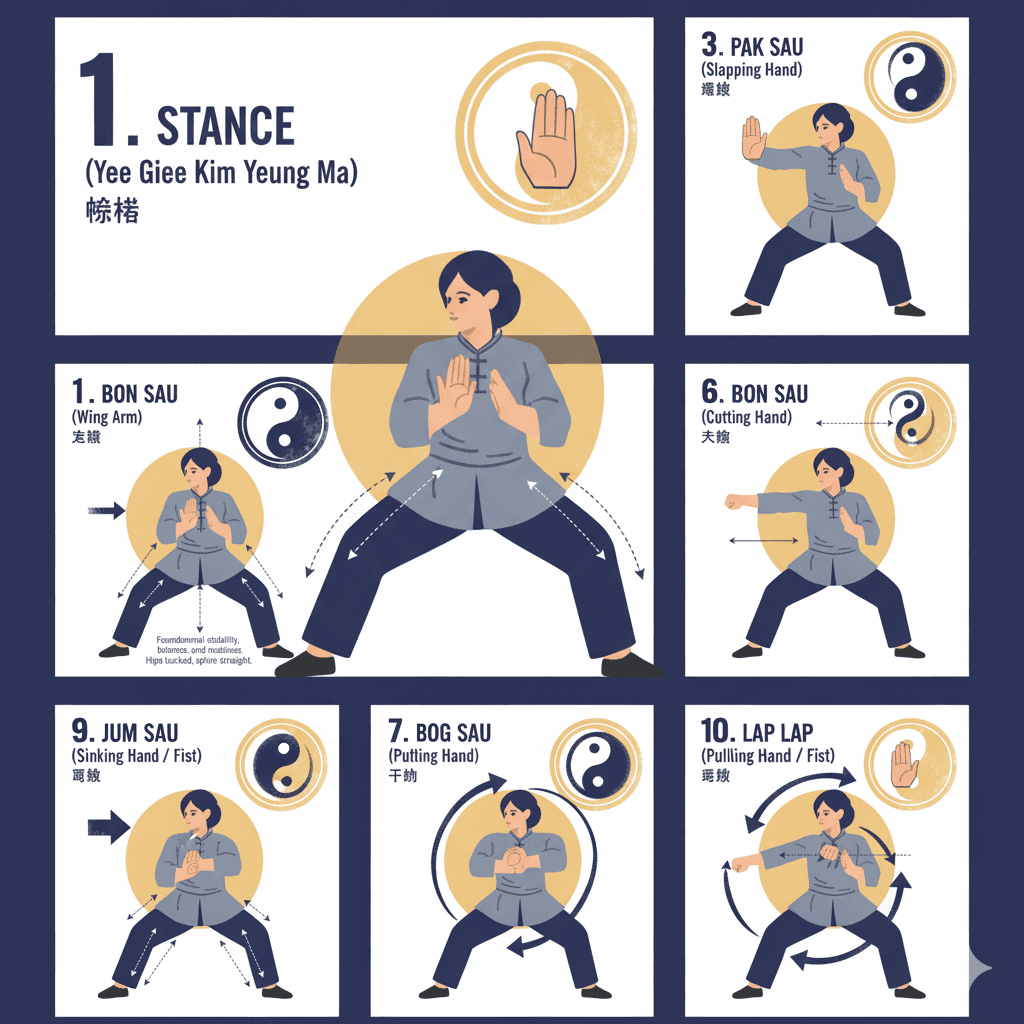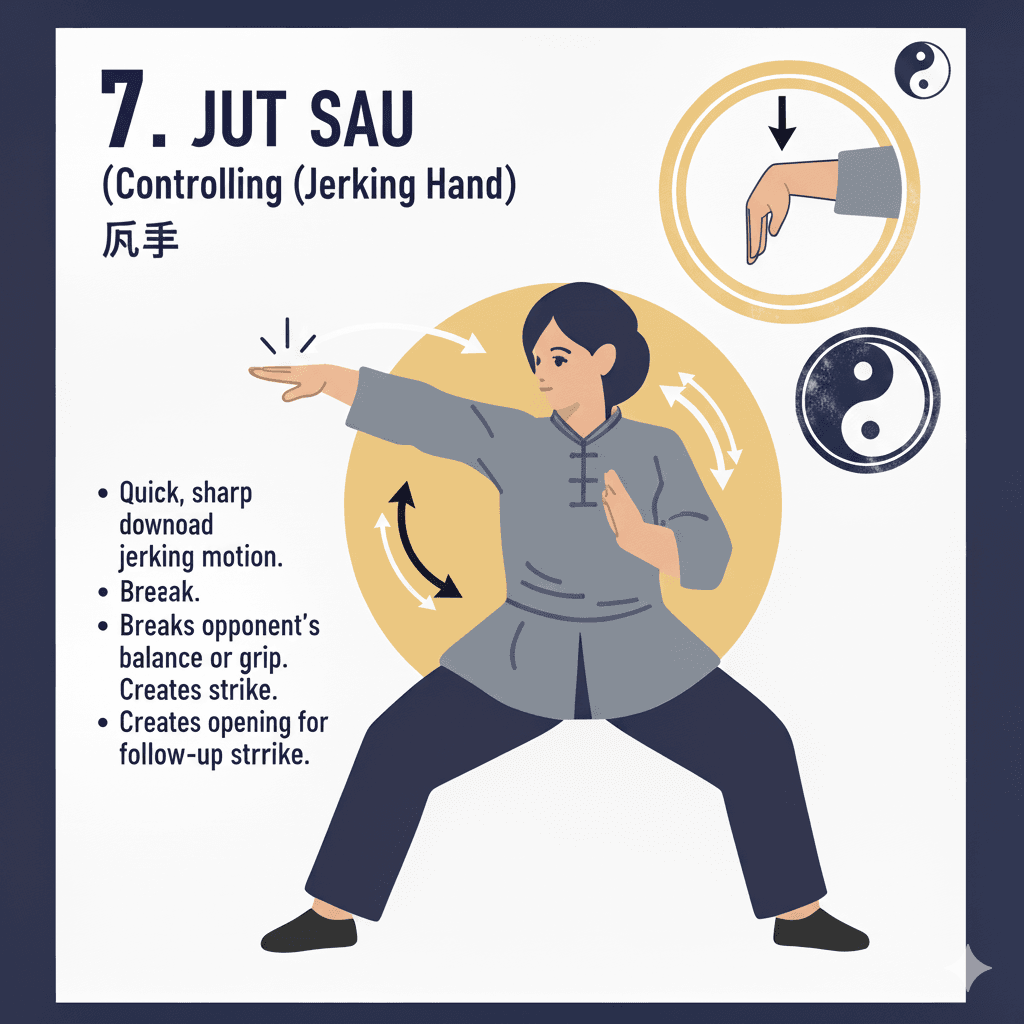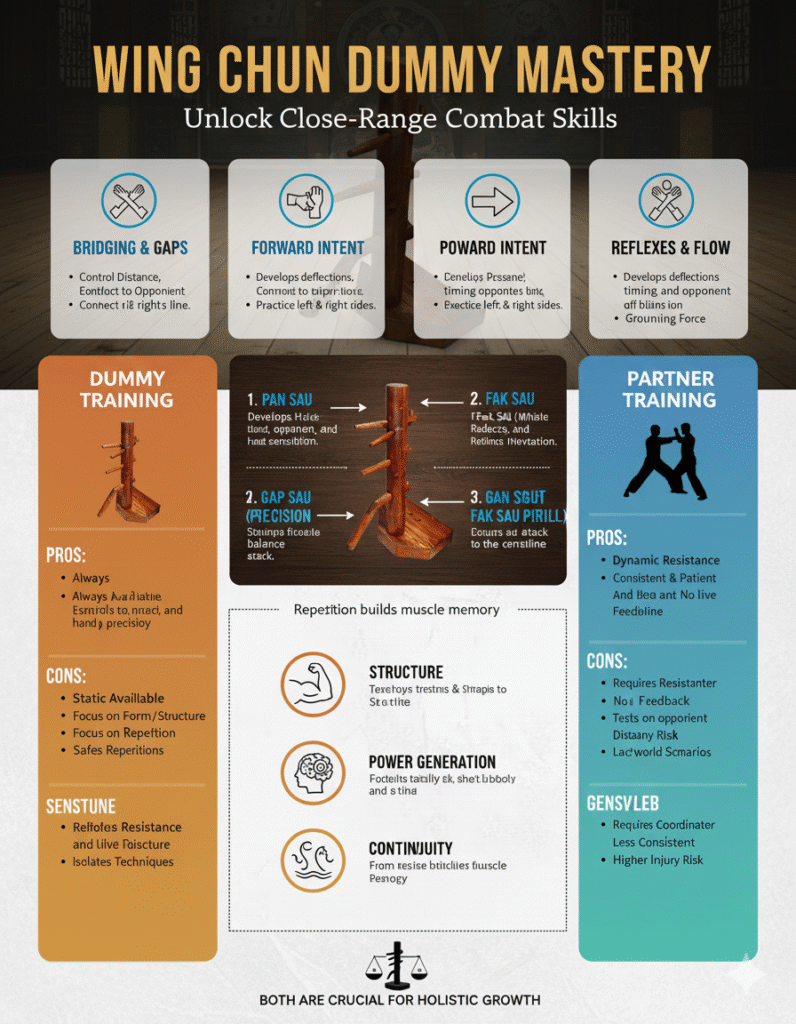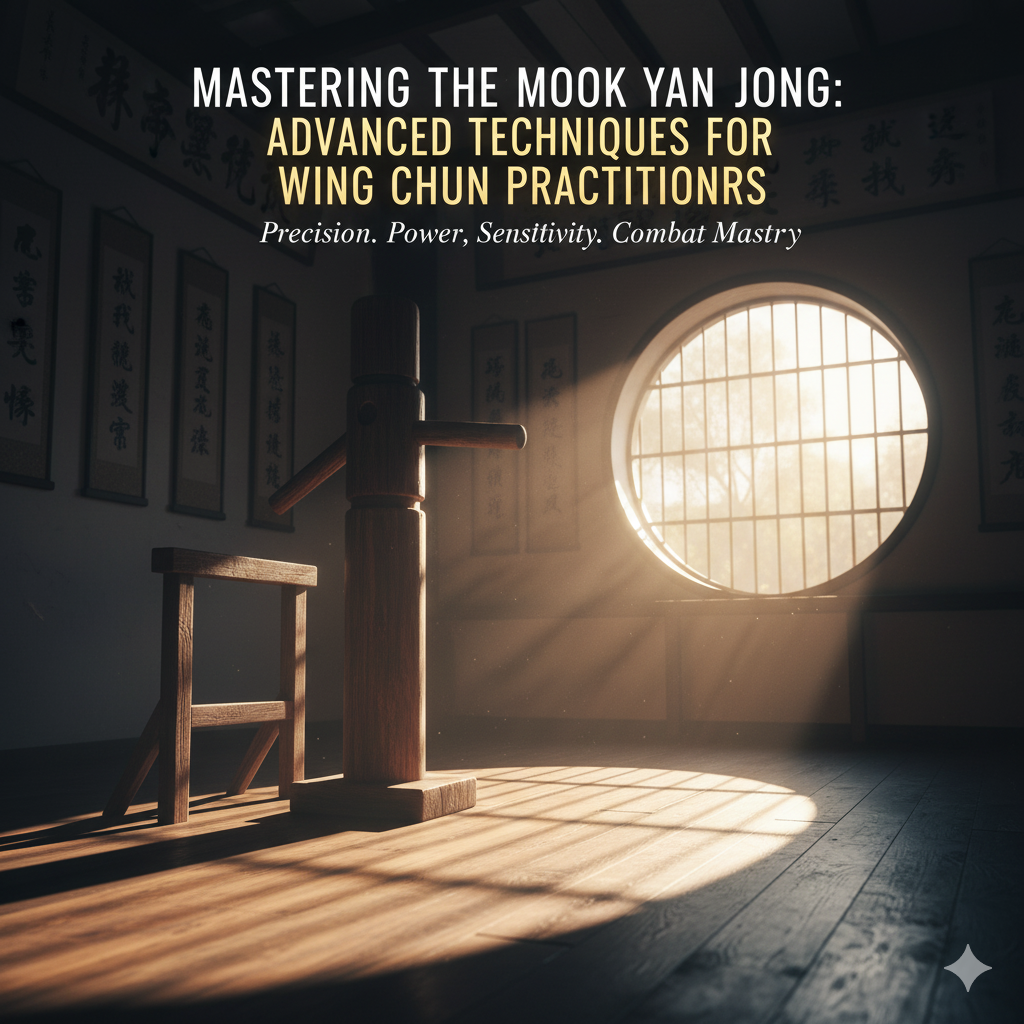In a world of dazzling acrobatics and high-flying kicks, there exists a martial art that whispers a different truth. It speaks not of brute force, but of quiet efficiency.
It doesn’t shout; it flows.
This is the world of Wing Chun, a martial art born from the need for a smaller, less physically imposing individual to overcome a larger, stronger adversary.
It’s a system built on a foundation of profound yet simple principles, a philosophy that permeates every block, every strike, every subtle shift in weight.
At its heart, Wing Chun is about being like water. Water, as Bruce Lee famously said, can flow or it can crash.
It is formless, shapeless, and yet it can fit into any container.
This is the essence of Wing Chun.
It is not about memorizing a thousand rigid techniques, but about understanding a handful of core principles so deeply that they become a part of you.
It’s about cultivating a sensitivity that allows you to feel your opponent’s intentions, to yield to their force, and to redirect it with effortless grace.
This philosophy of simplicity, directness, and efficiency is not just a theoretical concept;
it is woven into the very fabric of Wing Chun’s basic movements.
The art’s origins are steeped in the wisdom of Taoism, Buddhism, and Confucianism, each contributing to its unique character.
From Taoism comes the concept of Yin and Yang, the idea of “hacking away at the unessential” to find the most direct path.
Confucianism provides the moral compass, the code of conduct that guides the practitioner’s journey.
And from Buddhism comes the emphasis on the journey itself, the struggle against the ego, and the pursuit of self-improvement.

Videos and infographic are added creative thoughts 💭 💭 💭 💭
The Forms: A Blueprint for Mastery
Wing Chun’s journey begins with its forms, solo exercises that are far more than just a sequence of movements.
They are a moving meditation, a way to cultivate focus, balance, and a deep awareness of your own body.
Through the forms, you learn the language of Wing Chun, the hand positions, the techniques, and the defining movements that will become the building blocks of your practice.
Siu Lim Tau: The Little Idea

The first form, Siu Lim Tau, or “The Little Idea,” is the cornerstone of the entire system.
It is here that you are introduced to the fundamental concepts that will guide you throughout your training.
You learn about the Centerline Theory, the imaginary line that runs down the center of your body and your opponent’s, the most direct path to their vital targets.
You learn the unique structure of the Wing Chun punch, a marvel of efficiency that generates explosive power from a short distance.
You learn the Yee Jee Kim Yung Ma stance, a rooted yet mobile foundation that allows you to generate power from the ground up.
And you are introduced to the “three poison hands” of Wing Chun: Tan, Bong, and Fook.
Chum Kiu: Seeking the Bridge

Once you have a firm grasp of the fundamentals, you move on to Chum Kiu, or “Seeking the Bridge.”
This form is about taking the static structure of Siu Lim Tau and putting it into motion.
It is about learning to move your centerline while maintaining your balance, to generate power through coordinated, full-body movements.
Chum Kiu is where you learn to bridge the gap between you and your opponent, to control the space between you, and to unleash the full power of your techniques.
Biu Jee: Thrusting Fingers

The final form, Biu Jee, or “Thrusting Fingers,” is often misunderstood.
It is not a collection of flashy, advanced techniques, but rather a set of “emergency” techniques, a safety net for when your structure has been compromised.
Biu Jee teaches you how to recover your balance from awkward positions, how to return your hands to the centerline, and how to turn a defensive situation into an offensive one.
It is the embodiment of the compass needle, always returning to true north, no matter how it is spun.
The Hands of Wing Chun: A Symphony of Movement

The forms provide the blueprint, but it is in the application of the techniques that Wing Chun truly comes to life.
The “three poison hands” of Siu Lim Tau are not just blocks; they are concepts, principles that can be applied in a multitude of ways.
Tan Sau: The Palm Upward Block

Tan Sau is not a static block, but a dynamic action.
It is a palm-up hand that deflects and disperses incoming energy, often while simultaneously launching an attack.
It is a triangular shield, a wedge that splits your opponent’s force and creates an opening for your own.
The key to a proper Tan Sau is to keep your shoulder low and your elbow in, to direct your energy forward, not upward, and to spiral and corkscrew towards your opponent, not away from them.
Bong Sau: The Wing Arm

Bong Sau, or “Wing Arm,” is a transitional tool, a last resort when a direct strike or a Tan Sau is not possible.
It is a spiraling, corkscrewing motion that deflects an incoming attack, but it is never a final destination. A Bong Sau must immediately flow into another technique, another attack, another control.
The power of the Bong Sau comes not from the arm, but from the entire body, from the connection between your hip, your shoulder, and your elbow.
This creates an “immovable elbow,” a structure so strong that your opponent would have to move your entire body to displace it.
Fook Sau: The Subduing Hand
Fook Sau, or “Subduing Hand,” is a master of control.
It is a hand that can be used to deflect an attack, but it is more commonly used to control your opponent’s arms, to stick to them, to feel their intentions, and to shut down their attacks before they even begin.

Fook Sau is a core position in Chi Sau, or “sticking hands,” the sensitivity drill that is the heart and soul of Wing Chun.
It is through Chi Sau that you learn to truly listen to your opponent, to feel their every move, and to respond with effortless, intuitive grace.
Wing Chun is more than just a collection of techniques; it is a way of life.
It is a journey of self-discovery, a path to a deeper understanding of yourself and the world around you.

It is a reminder that true power lies not in brute force, but in simplicity, directness, and the ability to flow like water.
So, the next time you see a Wing Chun practitioner, look beyond the movements.
Look for the quiet confidence, the effortless grace, the unseen force that is the heart of
this beautiful and profound martial art.








